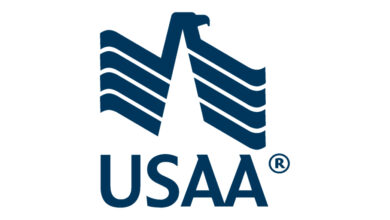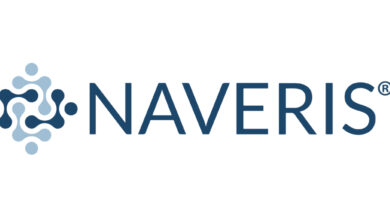Rayonier Advanced Materials Announces Fourth Quarter and Full Year Results

Fourth Quarter and Full Year 2020 Highlights
- Fourth quarter and full year income from continuing operations was $9 million, and $0 million, respectively, $66 million and $119 million higher than comparable periods in 2019, respectively
- Fourth quarter Adjusted EBITDA from continuing operations of $53 million was up $44 million from the comparable quarter in 2019 primarily driven by higher lumber and High Purity Cellulose prices
- Full year 2020 Adjusted EBITDA from continuing operations of $153 million improved $78 million from the prior year primarily driven by strong demand for lumber and reduced costs across segments as a result of improved reliability
- Generated $73 million of Free Cash Flow through the year ended December 31, 2020 driven by prudent management of capital expenditures and improved working capital; expect $55 million from cash tax refunds during 2021
- Completed refinancing in December to extend maturities, remove financial maintenance covenants and enhance liquidity
JACKSONVILLE, Fla.–(BUSINESS WIRE)–Rayonier Advanced Materials Inc. (NYSE:RYAM) (the “Company”) reported income from continuing operations for the quarter ended December 31, 2020 of $9 million or $0.14 per diluted share, compared to a loss from continuing operations of $57 million or $0.91 per diluted share for the same prior year quarter.
The net income from continuing operations for the twelve months ended December 31, 2020 was $0 million, or $0.00 per diluted common share, compared to a net loss of $119 million, or $2.33 per diluted common share for the prior year ended. The significant improvement in the diluted earnings per share was due to higher prices for lumber and High Purity Cellulose, lower costs driven by improved operational reliability and the conversion of the Company’s preferred stock into approximately 13 million shares of common stock in August of 2019.
“In the face of a very challenging economic backdrop, we delivered significantly improved financial results in 2020 and made substantial progress to position the company to deliver increased value for our shareholders in the coming years,” said Paul Boynton, President and Chief Executive Officer. “Through a cash-focused lens, we launched an initiative to think differently about how to manage the business in extremely challenging markets. Despite the outbreak of COVID-19, we executed on our plans to reduce costs, preserve cash and align production to fluctuating market demand. We focused on operating safely, efficiently and reliably to ensure we could help our customers thrive as their markets recovered. By the end of the year, with solid liquidity and sequentially-improved financial performance, we completed a refinancing to position the Company to successfully drive future results. I am proud of the team’s efforts to serve our customers and protect our shareholders.”
Fourth Quarter 2020 Operating Results
Net sales comprised the following for the periods presented:
|
| Three Months Ended |
| Year Ended | ||||||||||||||||
| Net sales (in millions) | December 31, 2020 |
| September 26, 2020 |
| December 31, 2019 |
| December 31, 2020 |
| December 31, 2019 | ||||||||||
| High Purity Cellulose | $ | 294 |
|
| $ | 253 |
|
| $ | 304 |
|
| $ | 1,051 |
|
| $ | 1,127 |
|
| Forest Products | 137 |
|
| 103 |
|
| 77 |
|
| 392 |
|
| 299 |
| |||||
| Paperboard | 49 |
|
| 47 |
|
| 49 |
|
| 190 |
|
| 200 |
| |||||
| Pulp & Newsprint | 45 |
|
| 38 |
|
| 54 |
|
| 172 |
|
| 215 |
| |||||
| Eliminations | (17 | ) |
| (17 | ) |
| (16 | ) |
| (66 | ) |
| (66 | ) | |||||
| Total net sales | $ | 508 |
|
| $ | 424 |
|
| $ | 468 |
|
| $ | 1,739 |
|
| $ | 1,775 |
|
Operating results comprised the following for the periods presented:
|
| Three Months Ended |
| Year Ended | ||||||||||||||||
| Operating income (loss) (in millions) | December 31, 2020 |
| September 26, 2020 |
| December 31, 2019 |
| December 31, 2020 |
| December 31, 2019 | ||||||||||
| High Purity Cellulose | $ | (3 | ) |
| $ | 8 |
|
| $ | (4 | ) |
| $ | 7 |
|
| $ | 7 |
|
| Forest Products | 60 |
|
| 25 |
|
| (4 | ) |
| 80 |
|
| (31 | ) | |||||
| Paperboard | 4 |
|
| 3 |
|
| 3 |
|
| 18 |
|
| 4 |
| |||||
| Pulp & Newsprint | (8 | ) |
| (6 | ) |
| (2 | ) |
| (25 | ) |
| 2 |
| |||||
| Corporate | (16 | ) |
| (13 | ) |
| (25 | ) |
| (53 | ) |
| (65 | ) | |||||
| Total operating income (loss) | $ | 37 |
|
| $ | 17 |
|
| (32 | ) |
| $ | 27 |
|
| $ | (83 | ) | |
High Purity Cellulose
Operating results for the three-month and full year periods ended December 31, 2020 improved $1 million and remained flat, respectively, when compared to the prior year. Sales prices for the segment increased 2 percent during the current three-month period driven by higher cellulose specialties prices and declined 8 percent for the full year ended December 31, 2020, driven by lower commodity sales prices. Compared to the prior year, sales volumes for the segment declined 7 percent during the three-month period driven by lower cellulose specialties and commodities volumes and increased 1 percent for the full year ended December 31, 2020, driven by higher commodity volumes partially offset by lower specialties volumes. Lower wood and chemicals costs positively impacted the current three-month and full year periods, offsetting sales prices and volumes declines.
Compared to the third quarter of 2020, operating income declined $10 million driven by higher maintenance, operational and energy costs partially offset by higher sales volumes.
Forest Products
The operating results for the three-month and full year periods ended December 31, 2020 improved $64 million and $111 million, respectively, when compared to the same prior year periods. The improvements were primarily due to increases in lumber prices of 75 percent and 40 percent, respectively, and lower costs driven by production curtailments in early 2020. Additionally, during the current quarter, the Company reversed $21 million of prior expenses related to import duties as the U.S. Department of Commerce announced its final determination in December 2020 to reduce the Company’s duties on Canadian softwood lumber imported into the U.S. from 20 percent to 9 percent for such duties paid during 2017 and 2018. However, cash related to these duties is not expected to return to the Company until final resolution of the softwood lumber dispute. Sales volumes during the three months ended December 31, 2020 increased 14 percent compared to the prior year due to strong demand and increased productivity. Sales volumes for the year ended December 31, 2020 were slightly lower than in the prior year as a result of market downtime taken in the first half of the year to address the initial negative impact on demand driven by the COVID-19 pandemic. The Company incurred $10 million and $23 million of duties in the year ended December 31, 2020 and 2019, respectively. Duties incurred during 2020 take into account the $21 million reduction previously mentioned.
Compared to the third quarter of 2020, the operating results improved by $35 million. The improvement was driven by a 13 percent increase in lumber prices, a 22 percent increase in lumber sales volumes and the previously mentioned $21 million reduction in duties, partially offset by higher lumber duties driven by the higher prices as well as higher wood and wood-related costs.
Paperboard
Operating income improved $1 million and $14 million for the three and twelve months ended December 31, 2020, respectively, when compared to the same prior year periods primarily due to lower raw material pulp prices.
Compared to the third quarter of 2020, operating income improved $1 million primarily due to higher sales volumes.
Pulp & Newsprint
Operating income for the three and twelve months ended December 31, 2020 declined $6 million and $27 million, respectively, when compared to the same prior year periods. The decline was primarily driven by lower newsprint sales prices and volumes during both the three-month and full year periods ended December 31, 2020 compared to the same prior year periods. Additionally, pulp prices were lower for the current year compared to prior year. Declines in Newsprint were due to weak demand and market-related downtime resulting from the COVID-19 pandemic. Pulp sales volumes increased during the three months and full year ended December 31, 2020 compared to the comparable prior year periods.
The operating loss was $2 million higher than the third quarter of 2020, with lower newsprint and pulp sales prices offset by higher pulp and newsprint sales volumes.
Corporate
The operating loss for the three months ended December 31, 2020 decreased by $9 million when compared to the same prior year quarter primarily due to lower environmental reserves charges and reduced spending, partially offset by unfavorable foreign currency impacts. The operating loss for the year ended December 31, 2020, decreased $12 million when compared to the prior year period primarily due to overall reduced spending and lower environmental reserves charges, partially offset by higher non-cash amortization of technology costs and unfavorable foreign currency impacts in the current year and the impact of an insurance recovery in the prior year.
Compared to the third quarter of 2020, the operating loss increased by $3 million during the fourth quarter ended December 31, 2020, driven primarily by unfavorable foreign currency impacts.
Non-Operating Expenses
On December 23, 2020, the Company completed the private placement of $500 million 7.625% Senior Secured Notes due 2026 (the “Notes”) and concurrently entered into a five-year senior secured asset-based revolving credit agreement (the “ABL Credit Facility”) in an initial aggregate principal amount of $200 million. In connection with these transactions, the Company terminated all commitments and repaid all outstanding obligations under its existing Credit Agreement and recorded a loss on debt extinguishment of $8 million.
Interest expense for the three months and full year ended December 31, 2020, decreased $1 million and increased $4 million, respectively, when compared to the same prior year periods. The full year increase was principally driven by increased interest margin related to the amendments to the credit facilities, partially offset by slightly lower debt levels.
Income Taxes
The effective tax rate benefit for the full year 2020 was 101 percent. The 2020 effective tax rate benefit differs from the federal statutory rate of 21 percent primarily due to benefits from the CARES Act, the release of certain valuation allowances related to nondeductible interest expense, tax return to accrual adjustments, and tax credits, partially offset by increases to uncertain tax position reserves, nondeductible executive compensation, and lower tax deductions on vested stock compensation. The effective tax rate benefit for the full year 2019 was 20 percent.
Cash Flows & Liquidity
For the year ended December 31, 2020, the Company’s operations provided cash flows of $124 million. Working capital increased $51 million, primarily due to an increase in the income tax receivable as a result of the CARES Act.
For the year ended December 31, 2020, the Company invested $73 million in capital expenditures, net of proceeds from sale of assets, including approximately $22 million of strategic capital spending.
The Company ended the year with $215 million of liquidity globally, including $94 million of cash, borrowing capacity of $102 million under the ABL Credit Facility and $19 million of availability on a factoring facility in France. Liquidity for the fourth quarter improved $19 million, due to an increase in cash driven by positive operational results and the impact of the ABL Credit Facility.
Market Assessment
The market assessment represents the Company’s best current estimate of each business in this environment.
High Purity Cellulose
The Company is experiencing increased strong demand for its commodity products and stable demand for its high-value cellulose specialties products. Prices for cellulose specialties are expected to decline slightly relative to 2020 while prices for commodity products, fluff and viscose pulps, will increase significantly in the first quarter and are forecasted to remain elevated for the near-term. Overall, the Company expects increased pricing from 2020 levels while total volumes and mix for 2021 are expected to remain steady compared to 2020 as increased productivity will be offset by an extended maintenance outage at the Jesup facility in the second quarter.
Key costs, including wood, energy and commodity chemical prices declined in 2020 from prior year levels due to both market conditions and strategic actions taken by the Company. However, certain chemical prices are now trending higher and, overall, future input prices and availability of these inputs remain difficult to predict due to the current unprecedented economic conditions. The Company will also continue to invest in its business to reduce costs, improve reliability and provide new platforms for growth. The Company’s 2020 investment in a green energy project at its Tartas facility will deliver lower costs and improved reliability starting in 2021.
Forest Products
Prices for lumber continue to remain near all-time high levels driven by exceptional demand in the U.S with housing starts in January 2021 of 1.6 million units, seasonally adjusted, and building permits of 1.9 million, while repair and remodel activity remains elevated as investment in homes remains attractive. With the absence of market downtime experienced in the first half of 2020 and new investments to increase productivity, the Company expects to produce an incremental 40 million board feet, an increase of 7 percent, compared to prior year.
In December 2020, the U.S. Department of Commerce finalized its administrative review of the period of April 28, 2017 through December 31, 2018 and determined a reduction of duties on softwood lumber imported into the U.S from 20 percent to 9 percent for the Company. The Company will benefit from the reduced amount of duties expense on lumber sold into the U.S; however there remains no discussion about a full resolution to the softwood lumber dispute which, based on most recent disputes, would likely result in the U.S. returning all or the vast majority of the duties previously paid. Since 2017, the Company has paid a total of $91 million in duties.
Paperboard
Paperboard prices are expected to increase slightly in early 2021 given solid demand for packaging grades and announced price increases from larger competitors in the industry. Overall profitability is expected to remain flat as price and volume benefits are expected to be offset by increased raw material costs.
Pulp & Newsprint
Pulp and newsprint markets are beginning to recover from lows in 2020 as economies recover from the impacts caused by COVID-19. Larger competitors in both pulp and newsprint markets have recently announced price increases, and the Company expects higher prices for both products in the near-term. Additionally, the Company continues to manage production of its newsprint facility in order to minimize costs and improve sales mix. As such, the Company expects lower newsprint volumes and higher prices in 2021 compared to 2020. Further, the Company is maintaining focus on the expansion of the Envirosmart™ food service bag, launched in late third quarter, targeting the quick service restaurant end-market and used for items such as sandwiches and to-go orders, which have grown and remain strong in the post COVID-19 environment.
Conclusion
“Financial results in 2020 were significantly stronger than 2019 as we were able to manage costs and execute reliably through the bottom of several market cycles, complicated by the volatile impact of COVID-19. We benefited from a strong lumber recovery in the back half of 2020 and now, as we enter 2021, we see very positive momentum in the commodity pulp markets. With price increases in these markets combined with 2020 cost actions, we are well positioned to capture significant incremental cash flow which will allow us to reduce debt, invest in our core High Purity Cellulose business, and drive high-potential growth and innovation projects,” concluded Mr. Boynton.
Conference Call Information
Rayonier Advanced Materials will host a conference call and live webcast at 10:00 a.m. ET on Thursday, February 25, 2021 to discuss these results. Supplemental materials and access to the live audio webcast will be available at www.rayonieram.com. A replay of this webcast will be archived on the company’s website shortly after the call.
Investors may listen to the conference call by dialing 877-407-8293, no passcode required. For international parties, dial 201-689-8349. A replay of the teleconference will be available one hour after the call ends until 6:00 p.m. ET on Thursday, March 11, 2021. The replay dial-in number within the U.S. is 877-660-6853, international is 201-612-7415, Conference ID: 13716261.
About Rayonier Advanced Materials
Rayonier Advanced Materials is a global leader of cellulose-based technologies, including high purity cellulose specialties, a natural polymer commonly found in filters, food, pharmaceuticals and other industrial applications. The Company also manufactures products for lumber, paper and packaging markets. With manufacturing operations in the U.S., Canada and France, Rayonier Advanced Materials employs approximately 4,000 people and generates approximately $1.7 billion of revenues. More information is available at www.rayonieram.com.
Forward-Looking Statements
Certain statements in this document regarding anticipated financial, business, legal or other outcomes including business and market conditions, outlook and other similar statements relating to Rayonier Advanced Materials’ future events, developments, or financial or operational performance or results, are “forward-looking statements” made pursuant to the safe harbor provisions of the Private Securities Litigation Reform Act of 1995 and other federal securities laws. These forward-looking statements are identified by the use of words such as “may,” “will,” “should,” “expect,” “estimate,” “believe,” “intend,” “forecast,” “anticipate,” “guidance,” and other similar language. However, the absence of these or similar words or expressions does not mean a statement is not forward-looking. While we believe these forward-looking statements are reasonable when made, forward-looking statements are not guarantees of future performance or events and undue reliance should not be placed on these statements. Although we believe the expectations reflected in any forward-looking statements are based on reasonable assumptions, we can give no assurance these expectations will be attained and it is possible actual results may differ materially from those indicated by these forward-looking statements due to a variety of risks and uncertainties. All statements made in this earnings release are made only as of the date set forth at the beginning of this release. The Company undertakes no obligation to update the information made in this release in the event facts or circumstances subsequently change after the date of this release. The Company has not filed its Form 10-K for the year ended December 31, 2020. As a result, all financial results described in this earnings release should be considered preliminary, and are subject to change to reflect any necessary adjustments or changes in accounting estimates, that are identified prior to the time the Company files its Form 10-K.
Our operations are subject to a number of risks and uncertainties including, but not limited to, those listed below. When considering an investment in our securities, you should carefully read and consider these risks, together with all other information in our Annual Report on Form 10-K and our other filings and submissions to the SEC, which provide much more information and detail on the risks described below. If any of the events described in the following risk factors actually occur, our business, financial condition or operating results, as well as the market price of our securities, could be materially adversely affected. These risks and events include, without limitation: Epidemic and Pandemic Risks Our businesses are subject to risks associated with epidemics and pandemics, including the COVID-19 pandemic and related impacts. The nature and extent of ongoing and future impacts of the pandemic are highly uncertain and unpredictable. Macroeconomic and Industry Risks The businesses we operate are highly competitive and many of them are cyclical, which may result in fluctuations in pricing and volume that can adversely impact our business, financial condition and results of operations; Changes in raw material and energy availability and prices could affect our business, financial condition and results of operations; We are subject to risks associated with doing business outside of the United States; Currency fluctuations may have a negative impact on our business, financial condition and results of operations; Restrictions on trade through tariffs, countervailing and anti-dumping duties, quotas and other trade barriers, in the United States and internationally, could adversely affect our ability to access certain markets. Business and Operating Risks Our ten largest customers represent approximately 31 percent of our 2020 sales, and the loss of all or a substantial portion of our revenue from these large customers could have a material adverse effect on our business; A material disruption at one of our major manufacturing facilities could prevent us from meeting customer demand, reduce our sales and profitability, increase our cost of production and capital needs, or otherwise adversely affect our business, financial condition and results of operation; The availability of, and prices for, wood fiber could materially impact our business, results of operations and financial condition; Our operations require substantial capital; We depend on third parties for transportation services and increases in costs and the availability of transportation could adversely affect our business; Our failure to maintain satisfactory labor relations could have a material adverse effect on our business; We are dependent upon attracting and retaining key personnel, the loss of whom could adversely affect our business; Failure to develop new products or discover new applications for our existing products, or our inability to protect the intellectual property underlying such new products or applications, could have a negative impact on our business; The risk of loss of the Company’s intellectual property and sensitive business information, or disruption of its manufacturing operations, in each case due to cyberattacks or cybersecurity breaches, could adversely impact the Company. Regulatory Risks Our business is subject to extensive environmental laws, regulations and permits that may restrict or adversely affect our financial results and how we conduct business; The potential longer-term impacts of climate-related risks remain uncertain at this time. Financial Risks We may need to make significant additional cash contributions to our retirement benefit plans if investment returns on pension assets are lower than expected or interest rates decline, and/or due to changes to regulatory, accounting and actuarial requirements; We have significant debt obligations that could adversely affect our business and our ability to meet our obligations; The phase-out of LIBOR as an interest rate benchmark in 2023 may impact our borrowing costs; Challenges in the commercial and credit environments may materially adversely affect our future access to capital; We may need additional financing in the future to meet our capital needs or to make acquisitions, and such financing may not be available on favorable terms, if at all, and may be dilutive to existing stockholders. Company’s Common Stock and Certa
Contacts
Media
Ryan Houck
904-357-9134
Investors
Mickey Walsh
904-357-9162




